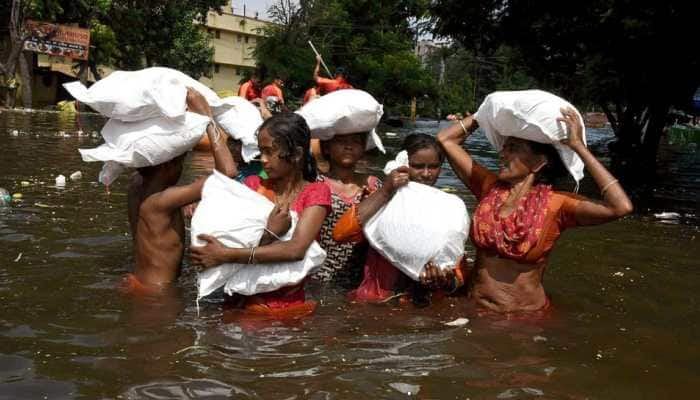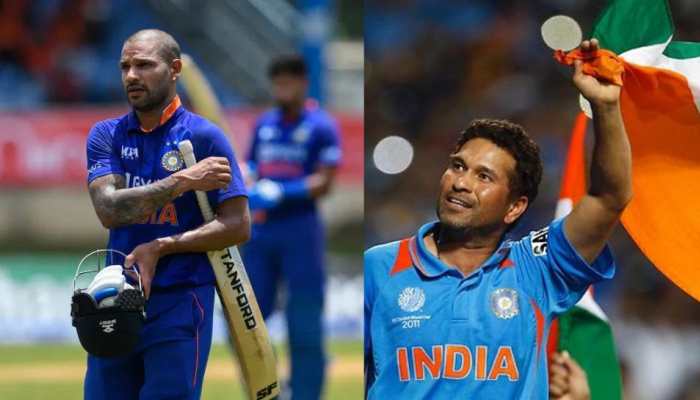Odisha Train Accident: Coromandel Express Crashed At 128 Kmph Speed, Missed Main Rail Line
Odisha Train Accident: Preliminary investigations have revealed that the Coromandel Express train entered the loop line instead of the main line and crashed into a goods train.
Trending Photos
The triple train accident in Odisha on June 2, 2023 is touted as one of the world rail disasters in the world, with more than 280 confirmed deaths and 900 injured. Prime Minister Narendra Modi visited the incident site in the Balasore district of Odisha, and said the government will leave no stone unturned to punish the culprits. Earlier, Railway Minister Ashwini Vaishnaw announced that a high-level probe has been initiated to ascertain the cause of the crash. While initial reports suggested that the Coromandel Express crashed head on with a goods train, it was later denied by the Indian Railways.
There have been all sorts of theories floated on various social media platforms detailing how exactly the crash took place. However, preliminary investigations have revealed that the Coromandel Express train involved in the rail tragedy in Odisha on Friday entered the loop line and crashed into a goods train parked there instead of the main line just ahead of the Bahanagar Bazar station, reported PTI quoting a source.
What Caused The Accident?
As per a report submitted to the Railway Board, the Coromandel Express travelling from Shalimar to Chennai Central was at a speed of 128 kmph, when possible signalling failure sent the train to the loop line instead of the main line just ahead of the Bahanagar Bazar railway station. The express train then rear ended into a parked goods train on the loop line, resulting in 4-5 coaches to scatter on the adjacent track.
Around the same time, the Bengaluru-Howrah Superfast Express was running at a speed of 116 kmph. The coaches of Bengaluru-Howrah Superfast Express capsized after crashing into the coaches of Coromandel Express that had scattered on the adjacent track.
The loop lines of the Indian Railways are constructed in a station area -- in this case, the Bahanagar Bazar station -- to accommodate more trains to ease out the operations. The loop lines are generally 750 metres in length to accommodate full-length goods train with multiple engines, reported PTI.
An eyewitness to the incident, Anubhav Das, also told PTI that local authorities and railway officials had initially indicated that the train he was travelling on -- Coromandel Express -- had rammed into the goods train. However, none of these accounts was officially confirmed by the railways. While a thorough probe is underway, none of the authorities has so far talked about any possibility of a sabotage.
While sources had earlier said a signalling failure could be the reason behind the crash, railway officials said it is not yet clear if Coromandel Express entered the loop line and hit the stationary goods train or it first derailed and then hit the parked train after entering the loop line. The preliminary probe report, a copy of which is with PTI, said the signal was given and taken off for the up main line for train number 12841 (Coromandel Express), the train entered the loop line, dashed with the goods train and derailed.
In the meantime, train number 12864 passed through the down main line and two of its coaches derailed and capsized, the report said. Sudhanshu Mani, the former general manager of the Integral Coach Factory, Chennai and the man who led the team that made the first Vande Bharat train, prima facie ruled out any error on the part of the two loco pilots involved in the tragedy and said the primary reason for the mass casualty is the first derailment and the unfortunate timing of the second passenger train, which came from the other direction at a very high speed.
Mani said if it was just the first train derailing, the LHB coaches would not have capsized and so many casualties would not have been reported. "Although the reason for the derailment of the first train cannot be a matter of conjecture, as of now, I do not see any evidence of an SPAD case, meaning the driver overriding signals. It was going on the correct path as the data logger shows that the signal was green," Mani said.
KAVACH Anti-Collision Technology
The national transporter has also said anti-train collision system "Kavach" was not available on the route. The railways is in the process of installing "Kavach", an anti-train collision system, across its network. "The rescue operation has been completed. Now, we are starting the restoration work. Kavach was not available on this route," Indian Railways Spokesperson Amitabh Sharma said.
Kavach alerts when a loco pilot jumps a signal (Signal Passed at Danger -- SPAD), which is the leading cause of train collisions. The system can alert the loco pilot, take control of the brakes and bring the train to a halt automatically when it notices another train on the same line within a prescribed distance.
The Indian Railways has appointed A M Chowdhary, CRS, SE Circle to investigate the crash. The commissioner of railway safety works under the Ministry of Civil Aviation and investigates all such accidents. "A M Chowdhary, CRS, SE Circle, will inquire into the accident," a spokesperson of the Indian Railways said. The crash involved Bengaluru-Howrah Superfast Express, Shalimar-Chennai Central Coromandel Express and a goods train.
Stay informed on all the latest news, real-time breaking news updates, and follow all the important headlines in india news and world News on Zee News.
Live Tv







)
)
)
)
)
)
)
)
)
)
